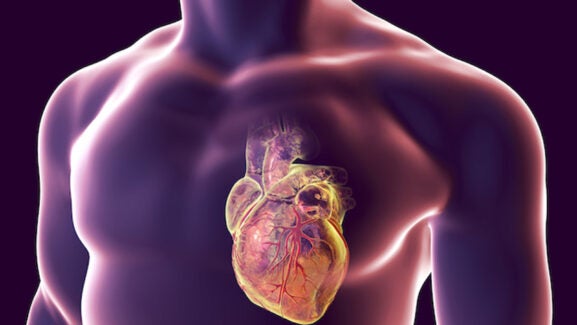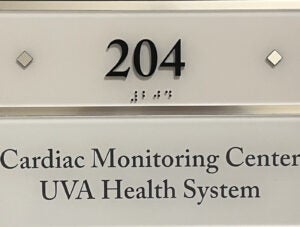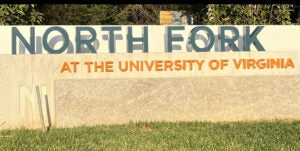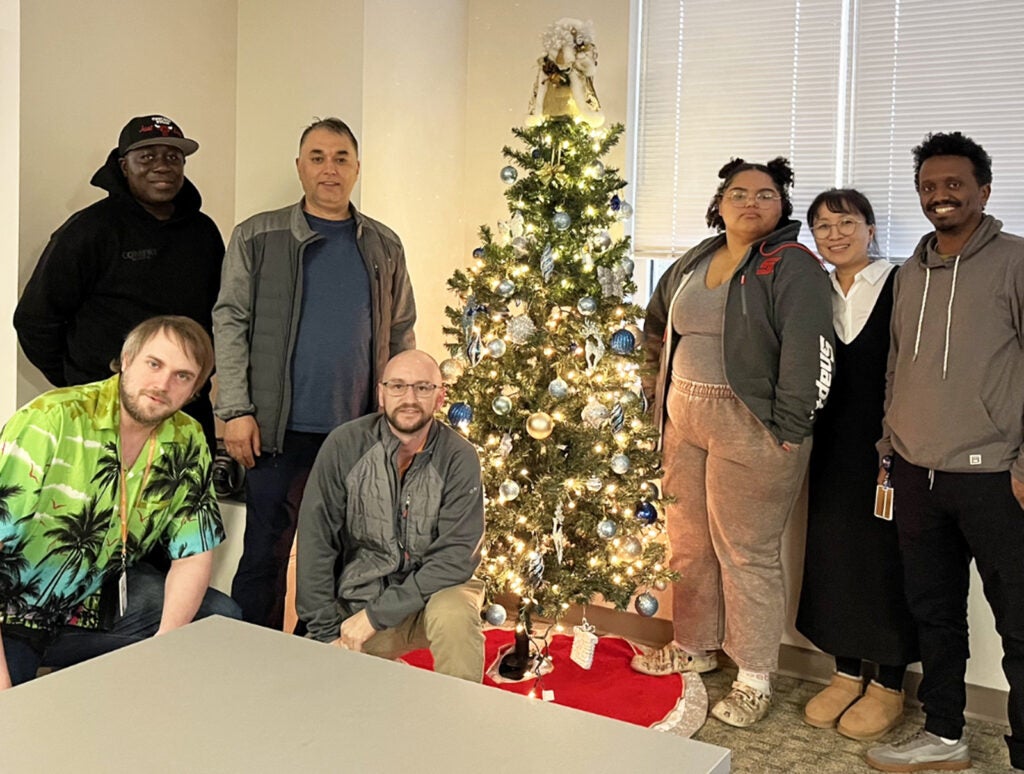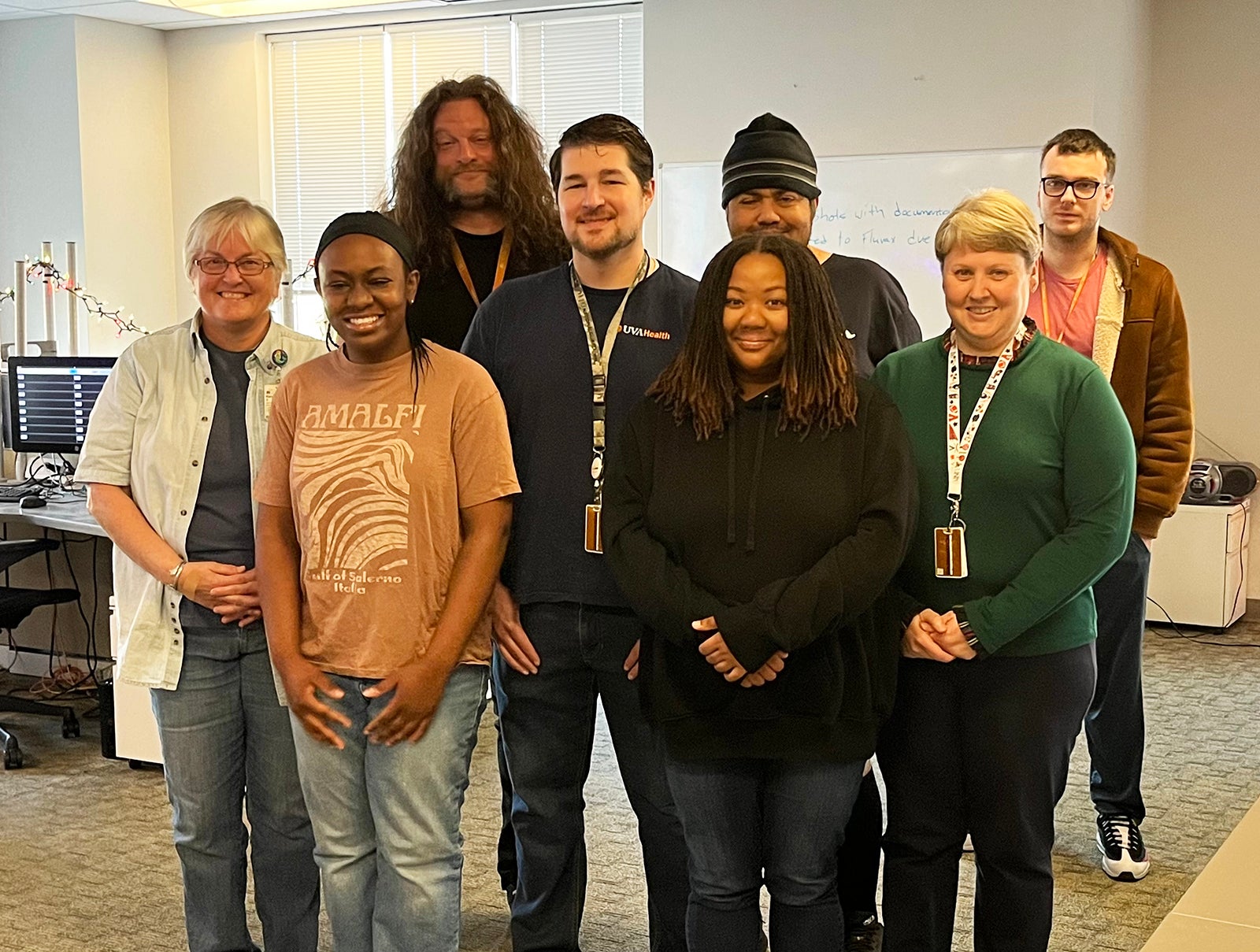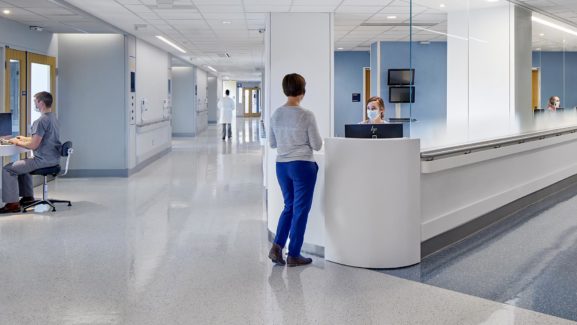
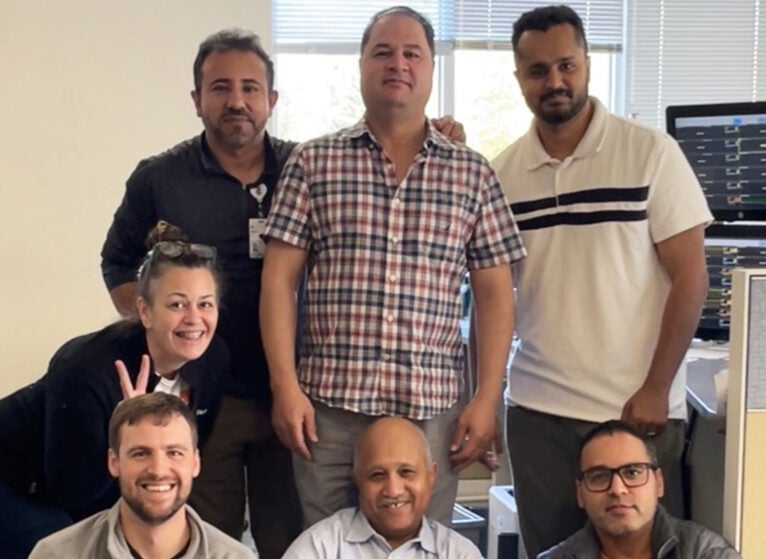
‘There Are Souls in Our Hands’: Behind the Scenes at UVA Health Central Cardiac Monitoring Center
For more than 20 years, Lauren Collins, ECG, BC, has worked in a UVA Health department that many team members may not even be aware exists: the Central Cardiac Monitoring Center.
Today, as supervisor, she oversees a team of nearly 50 who operate 24/7 at North Fork Research Park in Charlottesville. They observe inpatients being monitored for continuous data points such as ECG (heart rhythm), SP02 (saturation of peripheral oxygen; measurement of oxygen in blood), and EC02 (end-tidal carbon dioxide; level of carbon dioxide released at end of an exhaled breath). This patient population consists of all acute areas, IMUs (intermediate care; patients more critical than acute, but not Intensive Care Unit status), and the Emergency Department.
Over the years, UVA Health has been able to bring continuous monitoring to the patient as an alternative to sending all who need monitoring to a Heart and Vascular bed.
In this conversation with Connect, Collins — who's marking more than 30 years overall at UVA Health — shares more about this vital team:
Q: What does UVA Health’s Central Cardiac Monitoring Center do?
Our job is to detect any kind of minor, subtle, or obvious change and report that to the nurses who are on-site at UVA Health University Medical Center.
If one of our techs notices a clinical, non-life threatening change, they pick up the phone and call the appropriate nurse to alert them. But if we notice a life threatening change, we call the appropriate unit on a special red phone. Many like to refer to this phone as the “hotline” or “bat phone.” It looks like old-fashioned phones from the ‘70s, and it rings differently than normal phones. The sound makes the hair stand up on the backs of the necks of anyone who hears it! Everyone knows when that phone rings — there’s a life threating event happening! They pick up the phone, we relay the information, they go to the patient.
Q: How does the Central Cardiac Monitoring Center at North Fork help patients?
I like to call our team “Heroes Behind the Scenes.” The patients don’t even know we’re here — that they have this layer of extra support and care. What my team offers is patient safety. Our team has created such a safe standard of work, and every chance we get, we’re learning and improving our processes to prevent negative outcomes. The work we do is behind the scenes, and it’s so important. It’s such a compassionate, committed, and loyal group of people. The passion that they show for patient safety is unbelievable.
We understand each patient is someone’s mother, father, sister, brother, or child. You must keep that in the forefront of your brain, because just looking at squiggly lines all day, you can get kind of desensitized. It’s somebody’s life. These are souls in our hands.
Q: How does this service help nurses?
As you can imagine, nurses are running here, there, and everywhere. If nurses had to pay that close attention to every alarm that went off, they’d never be able to do anything else. We are able to manage alarms and add the eyes and ears continuously to support the hands-on medical teams.
Q: How did you come to work on this team?
I’ve been at the hospital for almost 32 years. I started as a patient care technician. I was very curious about what every beep and alarm meant when it came to those monitors, and I had such wonderful nurses and doctors around me who taught me what every little bump and hump in a rhythm means. I started watching the monitors, and that led me to the electrophysiology lab for several years. Being curious afforded me wonderful learning opportunities and experiences.
Over time, UVA Health started speaking about centralizing monitoring to all acute areas, which again, brings monitoring to patients. This opened another door to me and I was fortunate enough to be placed in a position to attempt to pull this off!
General Medicine was the first service line we included in central monitoring. Their team members had to be taught rhythm recognition and then, I realized I had found passion in teaching. As we grew our department and expanded to other service lines, I would teach rhythm interpretation to nurses. I’ve been so fortunate to be able to do all of this. It’s very, very gratifying for me!
Q: What does it take to succeed on your team?
From the interview process we tell candidates, "This is not just a job. This is a commitment to this team and to patient safety."
Some of our team members have been here for 20 years. They’ll do anything for patient safety even when it means they come in early or stay late. No matter how badly we need people, if we are interviewing someone and we don't think they’re going to have that compassion and commitment to patients and our team, then it’s not going to work.
Orientation for this position takes about six weeks. We also require team members to become nationally board certified by the American Board of Cardiovascular Medicine by their one-year anniversary. We nudge everyone to start studying after about eight months on the team. Our department was the only to require this certification at the time. It is a proctored exam and it is not easy! This is a unique skillset. This team does an amazing job helping and teaching each other.
Q: Any advice for other UVA Health team members?
Stay curious. You might think you know everything there is to know already, but underneath the roof of University Medical Center, the sky is the limit. There’s always something more to learn. And you never know where your curiosity will take you.
Q: Final thoughts?
The Central Cardiac Monitoring Unit team has your back! We are here to support you — these unsung heroes value patient safety above all else!
Latest News



